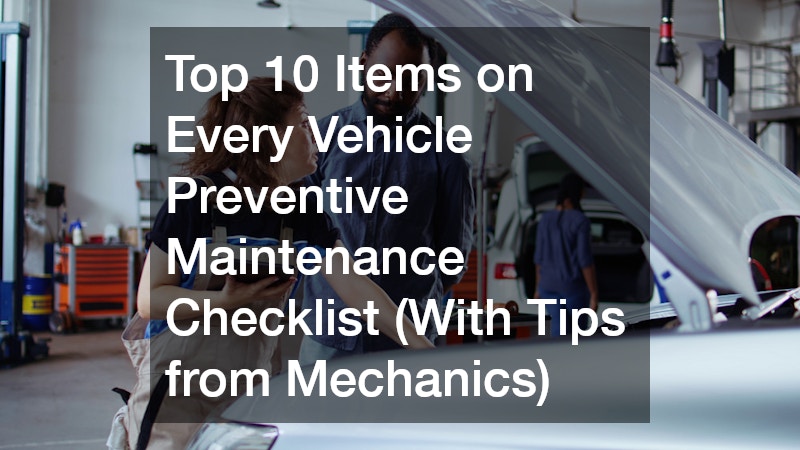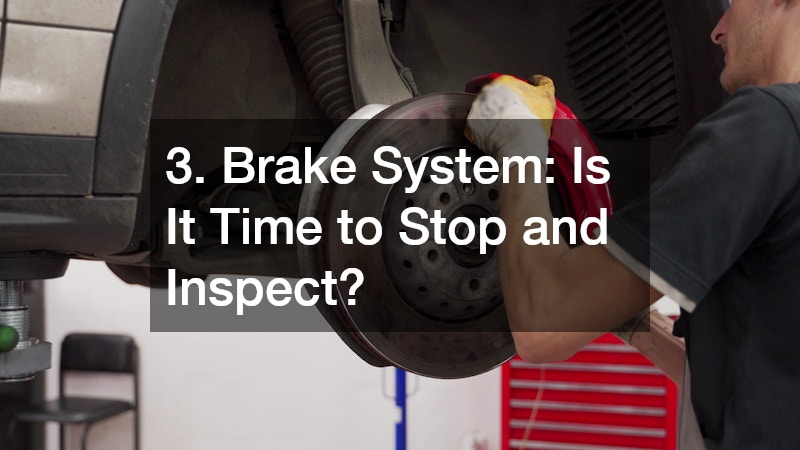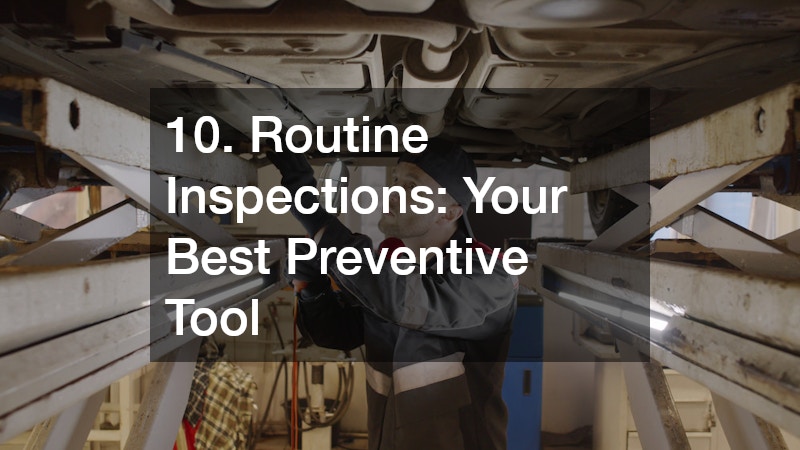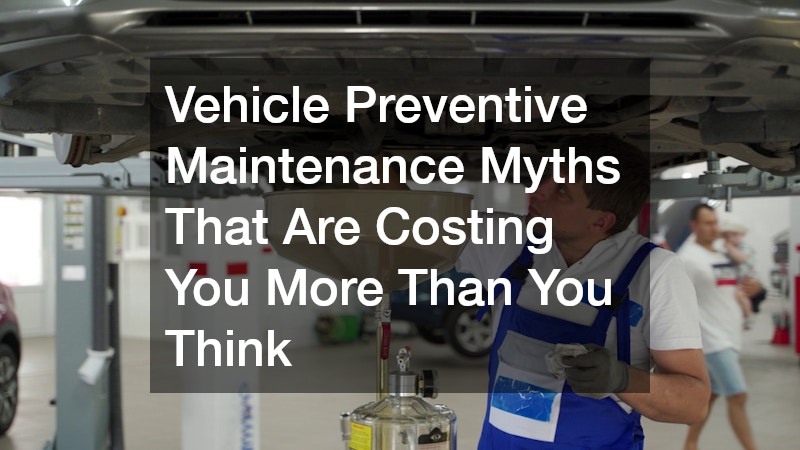
Top 10 Items on Every Vehicle Preventive Maintenance Checklist (With Tips from Mechanics)

If you’re a car owner who wants to avoid surprise breakdowns, sky-high repair bills, or sudden roadside emergencies, then preventive maintenance should be at the top of your priorities. Regularly inspecting and maintaining your vehicle helps extend its lifespan, improve fuel efficiency, and ensure your safety on the road. But with so many moving parts in a car, where do you even begin?
In this guide, we break down the top 10 essential items you’ll find on every vehicle preventive maintenance checklist, plus practical tips from experienced mechanics on how to handle them like a pro.
1. Engine Oil and Filter: Why It’s the First Line of Defense
Your engine oil lubricates moving parts, reduces friction, and helps keep your engine cool. Over time, oil breaks down and gets dirty, which can cause serious engine damage.
Mechanic’s Tip: Change the oil every 5,000 to 7,500 miles, or as recommended by your manufacturer. Always replace the oil filter when changing the oil to keep contaminants out of your engine.
2. Tire Pressure and Tread Depth: Are You Rolling Safely?
Proper tire maintenance is essential for handling, fuel efficiency, and safety. Low tire pressure can cause blowouts, while worn tread reduces grip, especially on wet roads.
Quick Checklist:
- Check tire pressure monthly using a gauge.
- Inspect tread depth using a penny—if Lincoln’s head is visible, it’s time to replace your tires.
- Rotate your tires every 6,000 to 8,000 miles.
Mechanic’s Tip: Invest in a digital tire pressure gauge and always check when tires are cold for accurate readings.
3. Brake System: Is It Time to Stop and Inspect?

Your brakes are arguably the most important safety feature in your car. From pads and rotors to brake fluid, regular inspection is key.
Warning Signs to Watch For:
- Squealing or grinding sounds
- A soft brake pedal
- Vibrations when braking
Mechanic’s Tip: Have your brakes professionally inspected at least once a year, and replace brake pads before they wear below 1/4 inch.
4. Battery Health: Are You at Risk of a No-Start Situation?
A dead battery is one of the most common causes of unexpected car trouble. Batteries typically last 3 to 5 years, but climate and driving habits can affect longevity.
Maintenance Tips:
- Check terminals for corrosion.
- Test battery voltage every six months.
- Look out for slow engine cranks.
Mechanic’s Tip: Use dielectric grease to prevent corrosion around battery terminals and secure connections tightly.
5. Fluids Check: More Than Just Oil
Your car uses multiple fluids to function smoothly—each one plays a unique role in keeping your vehicle roadworthy.
Must-Check Fluids:
- Coolant
- Transmission fluid
- Brake fluid
- Power steering fluid
- Windshield washer fluid
Mechanic’s Tip: Check levels and color regularly. Brown or burnt-smelling transmission fluid? Time to replace it.
6. Air Filters: Breathing Life Into Your Engine
Air filters keep dirt and debris out of your engine and cabin. When clogged, they reduce engine performance and fuel efficiency.
When to Replace:
- Engine air filter: Every 15,000 to 30,000 miles
- Cabin air filter: Once a year or every 12,000 to 15,000 miles
Mechanic’s Tip: If you drive in dusty or urban environments, check your filters more frequently.
7. Belts and Hoses: Are They Cracking Under Pressure?
Belts and hoses are easy to overlook—until they fail. A broken serpentine belt or leaking hose can cause major engine damage.
Inspection Guide:
- Look for cracks, fraying, or glazing.
- Squeeze hoses to check for brittleness.
- Listen for squeaking sounds while driving.
Mechanic’s Tip: Replace belts every 60,000 to 100,000 miles and hoses at the first sign of wear.
8. Lights and Wipers: Can You See and Be Seen?
Clear visibility is non-negotiable. Burned-out lights or streaky wipers can impair your driving, especially in bad weather.
Quick Tips:
- Test headlights, brake lights, turn signals, and hazard lights monthly.
- Replace wiper blades every 6 to 12 months.
- Keep your windshield washer reservoir filled.
Mechanic’s Tip: Use silicone-blend wiper blades for longer durability in harsh climates.
9. Suspension and Steering: Is Your Ride Smooth or Shaky?
The suspension system absorbs shocks and ensures stability. Steering components help you stay in control. Ignoring issues here can lead to poor handling and uneven tire wear.
Signs of Trouble:
- Excessive bouncing
- Uneven tire wear
- Drifting while driving straight
Mechanic’s Tip: Have your alignment checked annually, especially if you hit a pothole or curb.
10. Routine Inspections: Your Best Preventive Tool

Ultimately, the best way to avoid breakdowns is through consistent inspections. Incorporate a vehicle preventive maintenance routine into your schedule.
What to Do Monthly:
- Review your dashboard for warning lights
- Listen for unusual noises
- Perform a quick walk-around inspection
Mechanic’s Tip: Keep a log of inspections and services—it can also boost your car’s resale value.
Why a Vehicle Preventive Maintenance Checklist Matters
A reliable vehicle preventive maintenance checklist can save you thousands of dollars over your car’s lifetime. It ensures you’re staying proactive instead of reactive, catching small issues before they turn into major repairs. By following a checklist—and applying expert tips like those above—you’ll enjoy peace of mind knowing your car is in top shape.
